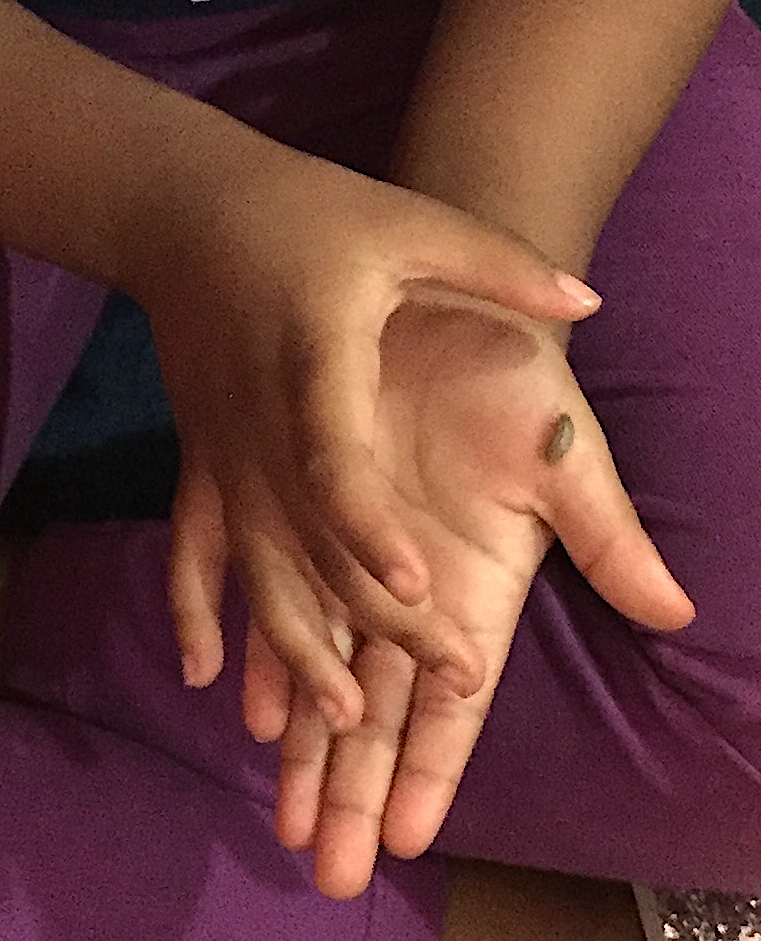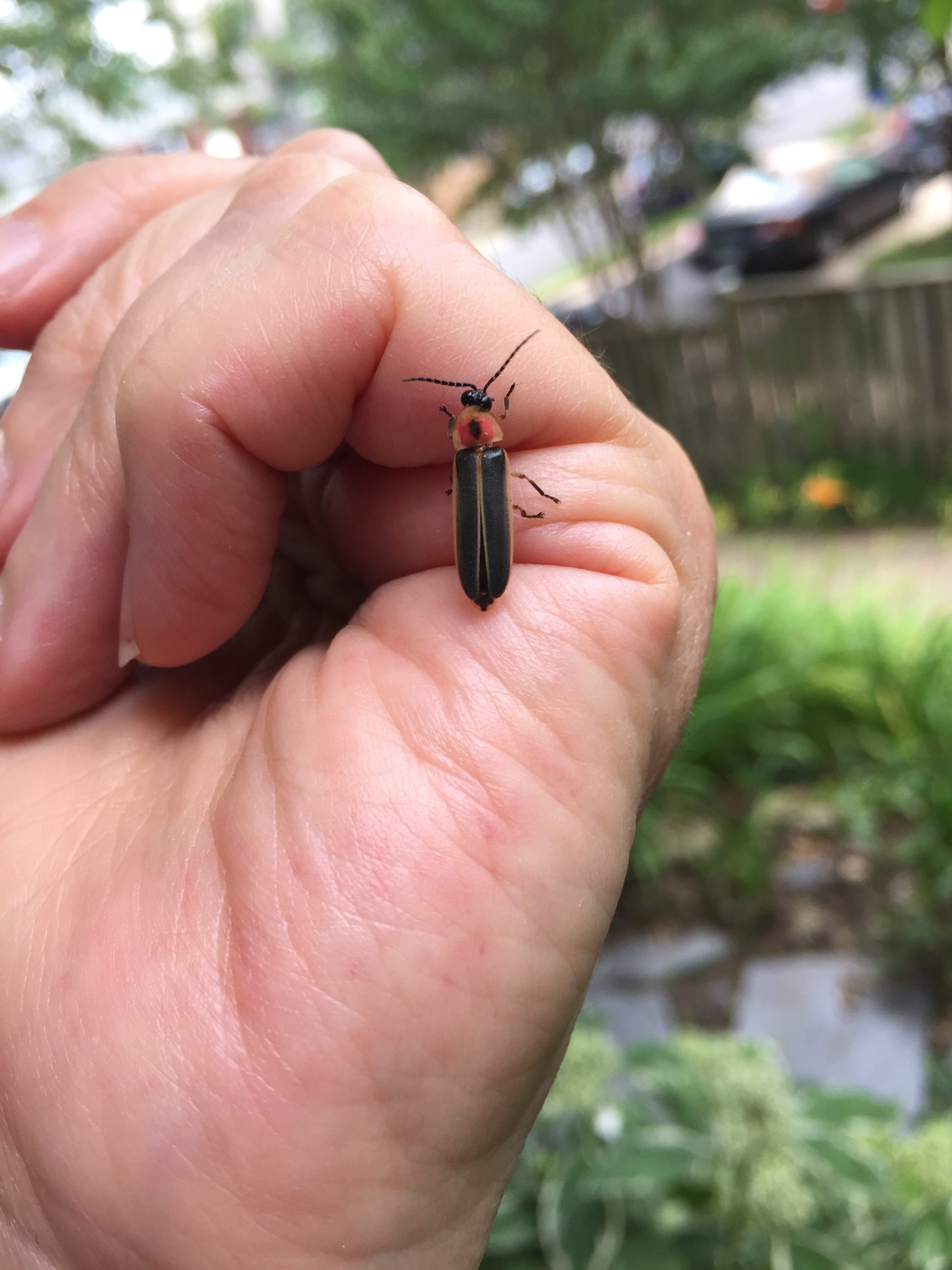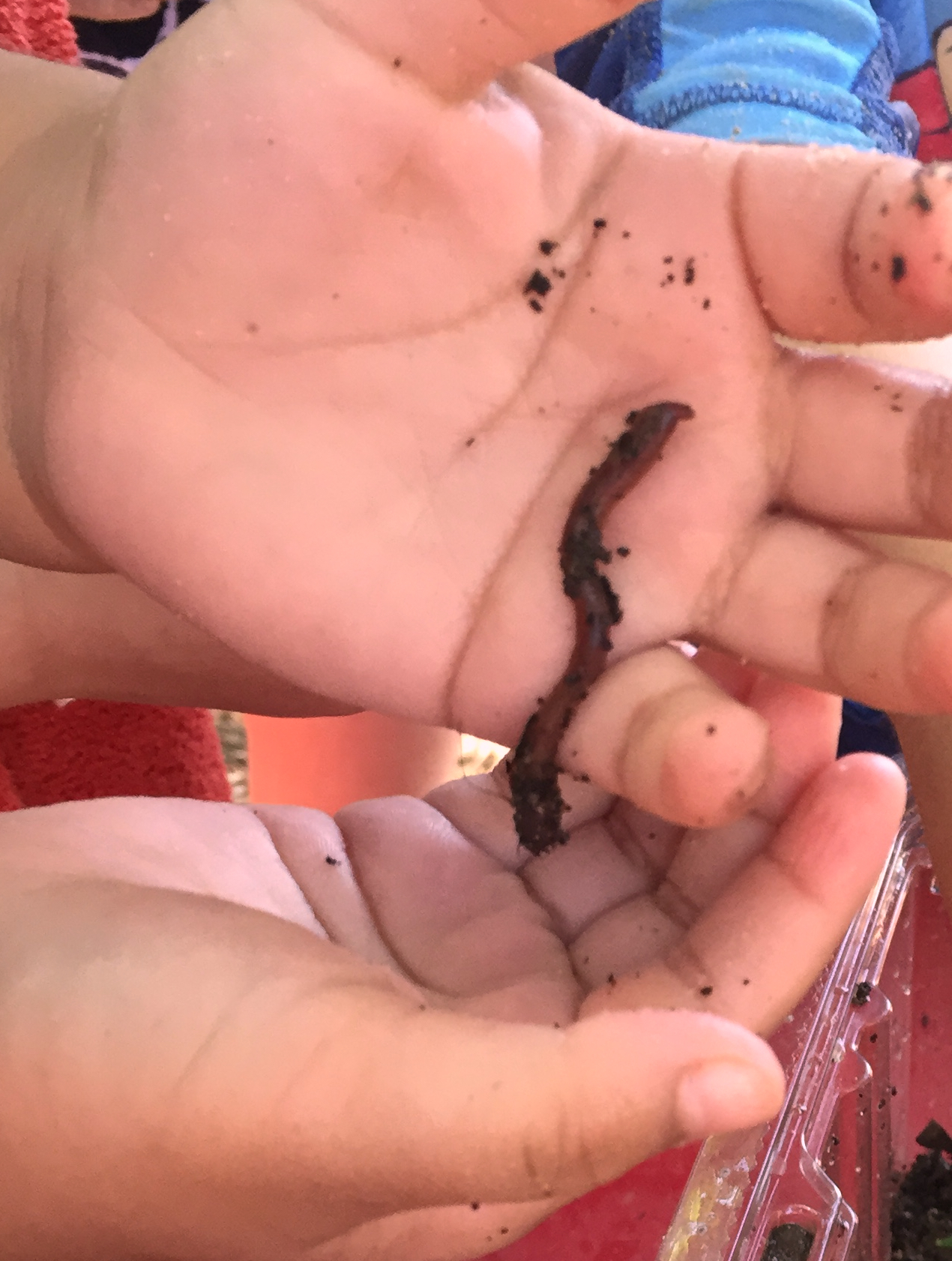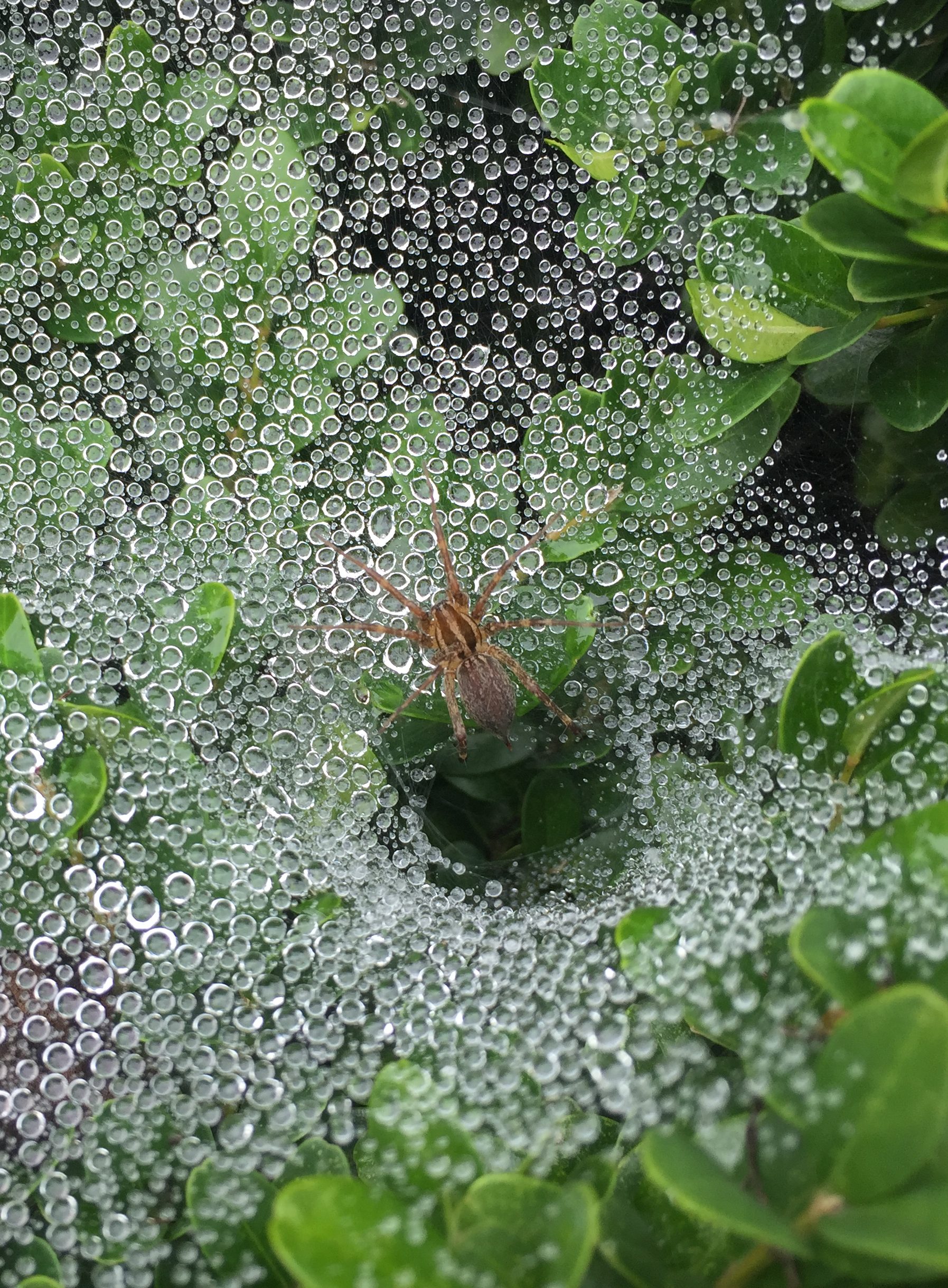Spiders and other small creatures—do we want children to be afraid?
By Peggy Ashbrook
Posted on 2018-10-30
Huge anatomically incorrect ‘spiders’ with legs as long as a Daddy Longlegs’ took over the neighborhood these past weeks, crawling up webs ‘spun’ on the sides of houses. Dropping out of trees are others with more fuzzy hair than a troll doll. Halloween is a time to delight in shivers from confronting fantastical images when we know they are “not real.”
 When children are too afraid of a spider, bee, or other small animal to enjoy a picnic or hike through woods, they will miss out on learning about the many awe-inspiring connections between living organisms in an environment and their relationship to the non-living parts of the landscape too. Look at how the body of the bee works so well to get food from the flower, and how the shape of the flower parts make pollen easily attach to a visiting bee. I want children to be aware and cautious but not afraid as they play outdoor. Every local has some dangers that children must be protected from, such as, stinging and biting insects, venomous snakes, toxic mushrooms, and bacteria that can cause illness, as well as traffic, fine particle air pollution, and applications of chemical pesticides. Some children are at more risk than others due to allergies or inadequate immune systems. Teaching children how to safely play outdoors is a gift that will last for their lifetime. We can prepare ourselves to give this gift by increasing our knowledge and comfort with co-existing with all the nature in our area. When we are aware of real dangers, such as tick-borne illnesses, we prepare to avoid and prevent them through learning. I much prefer the scent of rosemary to that of DEET, but appreciate the scientific testing that goes into determining how effective anything is for repelling mosquitoes and ticks.
When children are too afraid of a spider, bee, or other small animal to enjoy a picnic or hike through woods, they will miss out on learning about the many awe-inspiring connections between living organisms in an environment and their relationship to the non-living parts of the landscape too. Look at how the body of the bee works so well to get food from the flower, and how the shape of the flower parts make pollen easily attach to a visiting bee. I want children to be aware and cautious but not afraid as they play outdoor. Every local has some dangers that children must be protected from, such as, stinging and biting insects, venomous snakes, toxic mushrooms, and bacteria that can cause illness, as well as traffic, fine particle air pollution, and applications of chemical pesticides. Some children are at more risk than others due to allergies or inadequate immune systems. Teaching children how to safely play outdoors is a gift that will last for their lifetime. We can prepare ourselves to give this gift by increasing our knowledge and comfort with co-existing with all the nature in our area. When we are aware of real dangers, such as tick-borne illnesses, we prepare to avoid and prevent them through learning. I much prefer the scent of rosemary to that of DEET, but appreciate the scientific testing that goes into determining how effective anything is for repelling mosquitoes and ticks.
 To help children feel safe when a cicada zooms past them or a Daddy Longlegs crawl near, we can first introduce them to making close observations of harmless small animals: isopods (roly-polies), lightning bugs, and earthworms. When animals are in a closed container children may feel comfortable getting close to it. Ask children who want to touch these animals to begin with just one “gentle finger.” This will help them become used to the texture of the animal and also not hurt it. A “Have you touched a worm?” T-chart with two columns—“yes” and “not yet”—can be used to tally experiences that may change over time with additional opportunities.
To help children feel safe when a cicada zooms past them or a Daddy Longlegs crawl near, we can first introduce them to making close observations of harmless small animals: isopods (roly-polies), lightning bugs, and earthworms. When animals are in a closed container children may feel comfortable getting close to it. Ask children who want to touch these animals to begin with just one “gentle finger.” This will help them become used to the texture of the animal and also not hurt it. A “Have you touched a worm?” T-chart with two columns—“yes” and “not yet”—can be used to tally experiences that may change over time with additional opportunities.
Always wash hands after handling animals.
I do not encourage children to touch small animals that sting or bite, such as bees, centipedes, scorpions, and spiders. Although Daddy Longlegs, also known as Harvestmen, belong to the class Arachnida which also includes spiders, scorpions, mites and ticks, they are not spiders. They are harmless and do not bite or sting but they are fragile and rough handling may break off their legs.
Early childhood educator and author Marie Faust Evitt writes about helping children overcome their fear of spiders, but still retain a healthy caution, by going on a spider hunt, and later, making giant spider webs and constructing a huge, anatomically correct, spider. The children research how spiders make webs of various “stickiness” for different parts of the web.
After the Halloween decorations come down, children will still be seeing (much smaller) spiders and should not be deprived of learning about the lives of these tiny animals.
Outdoors looking for living organisms we will roll logs towards ourselves so any animal that is disturbed will move away from us, with the log separating us so we can have a moment to identify them before choosing to get closer. Indoor spiders will be captured by adults who are comfortable in this role, and kept in a clear container for a period of close observation before being released outdoor.
Science and Children has several useful articles with information and lesson plans on spiders including:
Science 101: Why Don’t Spiders Stick to Their Own Webs? By Bill Robertson. September 2011. 49(1): 68-69.
Becoming a Spider Scientist by Patricia Patrick and Angela Getz. November 2008. 46(3): 32-35.
Disclaimer: The views expressed in this blog post are those of the author(s) and do not necessarily reflect the official position of the National Science Teaching Association (NSTA).







